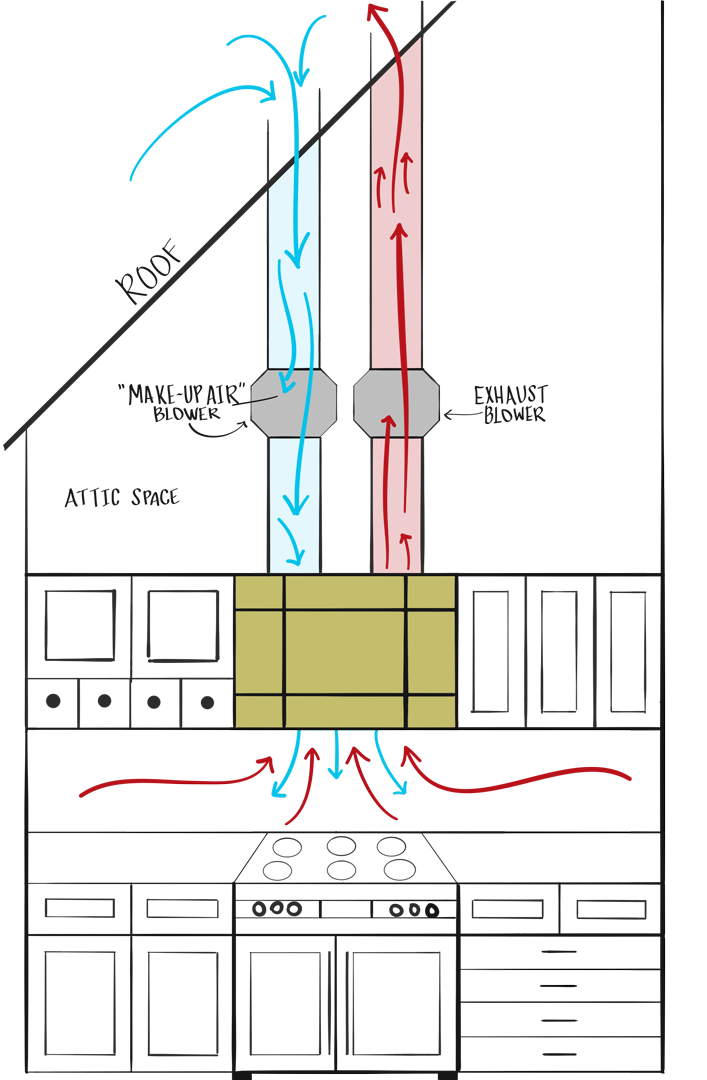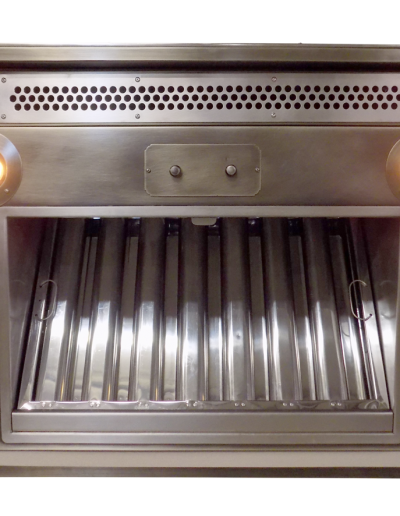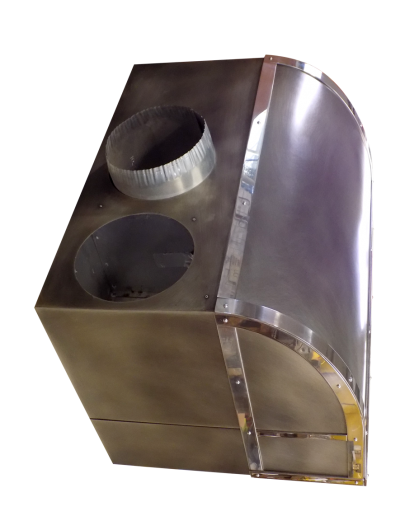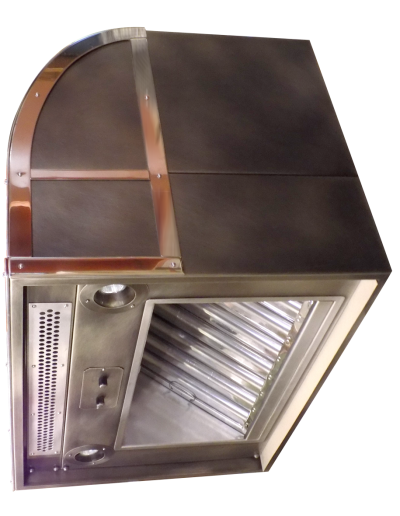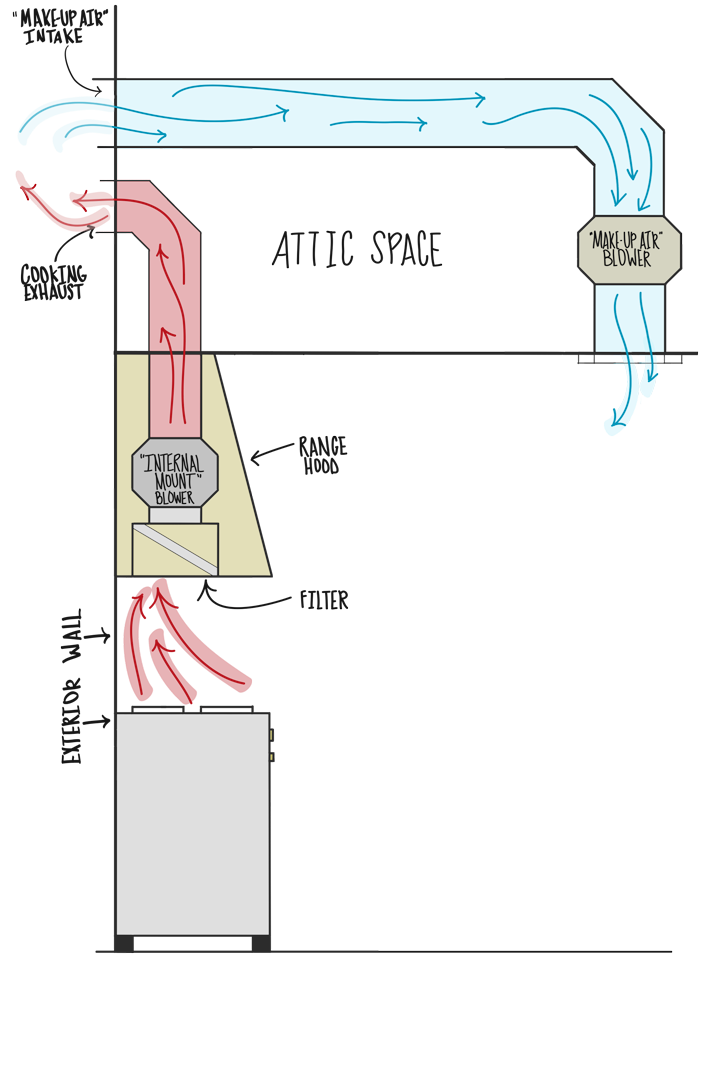About Makeup air
The exhaust air that your range hood fan removes has to come from somewhere.
Most homes have several exhaust appliances. They can include:
- a bathroom fan (40 CFM to 200 CFM),
- a central vacuum-cleaning system (100 CFM to 200 CFM).
- a clothes dryer (100 CFM to 225 CFM),
- a combustion appliance that vents outside (gas-fired or oil-fired fireplace, water heaters, furnaces, boilers, wood stoves; 30 CFM to 50 CFM),
- a room heater (40 CFM to 100 CFM),
- a vented water heater (50 CFM),
- the range hood fan (303 CFM to 1266+ CFM)
Energy efficiency includes sealing all places where air can get in, but making it hard for air to enter presents some challenges when it comes to ventilating exhaust. Air must get in to replace the air being removed, and heaters and air conditioners are not always up to it. When an exhaust appliance removes air from your house, an equal volume of air must enter. In older homes, the leaks and drafts present would supply any necessary makeup air. In newer or more energy-efficient homes, there aren’t enough random air leaks around windows, doors, and mud sills to make up the exhaust air. Makeup air is then pulled through water-heater vents, clothes dryer vents, or down wood-burning chimneys, a phenomenon called backdrafting. Because the flue gases of combustion appliances can include carbon monoxide, backdrafting can be dangerous.
Solution
In this example, the makeup air is pulled through the hood in the duct on the left and feeds into the exhaust air through a register in the front of the hood.
The Broan passive makeup air damper is controlled by the power to the exhaust fan. When the range hood is engaged, the damper opens and air is allowed into the house. The air is not conditioned or heated. In this situation, the exhaust air is often “pre-conditioned” in a space such as an attic or basement area, to be somewhat of a “buffer zone” for the incoming outside air. Air enters this space near the furnace or a/c intake register, and is then filtered and heated or conditioned to enter the living space through the duct.
Most rules of thumb say makeup air supply temperature should be within 10 degrees of the room temperature. So if, in the winter you heat your house to 65 degrees, your makeup air supply temperature should be at least 55 degrees. For this application Fantech makes a makeup air system MUAS that heats and filters and heats the makeup air before it enters the house.


